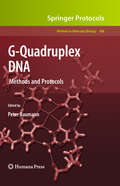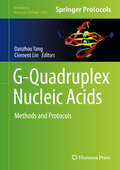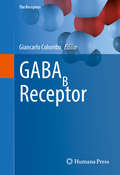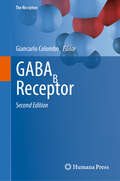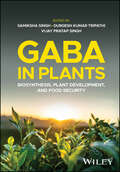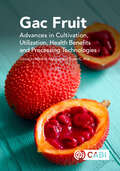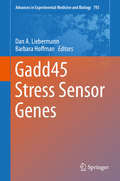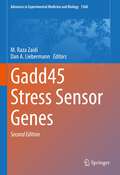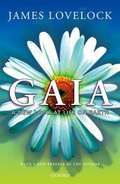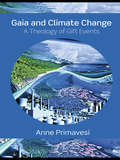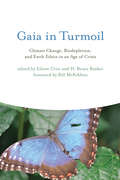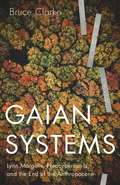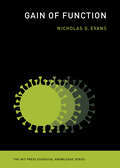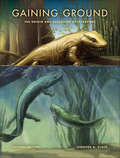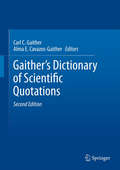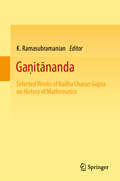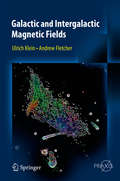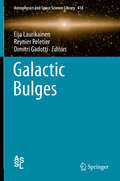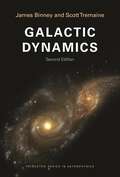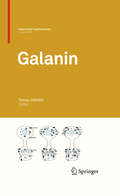- Table View
- List View
G-Quadruplex DNA
by Peter BaumannRecent work has revealed that stabilizing G-quadruplexes in telomeric DNA inhibits telomerase activity, providing impetus for the development of G-quartet-interacting drugs, while G-quartet-containing oligonucleotides have been recognized as a potent class of aptamers effective against STAT3 and other transcription factors implicated in oncogenesis, proving these guanine-quartets to be a vital and rich area for future study. In "G-Quadruplex DNA: Methods and Protocols", experts in the field present a collection of detailed techniques for studying G-quartet formation, dynamics, and molecular recognition. Written in the highly successful Methods in Molecular BiologyTM series format, chapters include brief introductions to their respective topics, lists of the necessary materials and reagents, step-by-step, readily reproducible laboratory protocols, and notes on troubleshooting and avoiding known pitfalls. Authoritative and cutting-edge, "G-Quadruplex DNA: Methods and Protocols "promises to be a useful resource for those familiar with G-quartets as well as an easy entry point for those researchers from diverse fields who are just developing an interest in the exciting implications of G-quadruplex DNA.
G-Quadruplex Nucleic Acids: Methods and Protocols (Methods in Molecular Biology #2035)
by Danzhou Yang Clement LinThis volume covers the structures, properties, and functions of G-quadruplexes in a wide range of biological disciplines, including therapeutic intervention and biomaterial application. The chapters in this book explore a wide range of vital and new experimental techniques used in the study of G-quadruplexes. Written in the highly successful Methods in Molecular Biology series format, chapters include introductions to their respective topics, lists of the necessary materials and reagents, step-by-step, readily reproducible laboratory protocols, and tips on troubleshooting and avoiding known pitfalls. Practical and cutting-edge, G-Quadruplex DNA: Methods and Protocols is a valuable resource for both novice and experienced researchers who work in biophysics, structural biology, computational biology, biochemistry, and molecular and cell biology, and who want to learn more about the potential roles and effects of G-quadruplex in these fields.
G. V. Schulz: Leben und Forschen eines Polymer-Pioniers im 20. Jahrhundert
by Sebastian SeiffertProf. Dr. Günther Viktor Schulz, ein bedeutender Wissenschaftler des 20. Jahrhunderts, prägte ganz wesentlich das Gebiet der Polymerchemie. Sein Leben und Wirken in den Wirren dieser Epoche war erfüllt von wissenschaftlichen Entdeckungen und schicksalhaften Begegnungen. Das vorliegende Werk stellt eine private Niederschrift seiner persönlichen Lebens- und Arbeitserinnerungen bereit.
GABAB Receptor
by Giancarlo ColomboAn up-to-date comprehensive overview of the GABA B receptor system with a particular focus on the most recent therapeutic applications and potential. This receptor system has recently been implicated in several diseases and disorders including gastroesophageal reflux disease, epilepsy, mood disorders, depression, and alcohol and substance use disorder. The authors, leading researchers in the field, explore a number of approaches, including medicinal chemistry, molecular biology, physiology, and preclinical and clinical pharmacology. This overview provides a translational perspective on the potential of the GABA B receptor pharmacology.
GABAB Receptor (The Receptors)
by Giancarlo ColomboThis new edition presents an up-to-date, comprehensive overview of the GABAB receptor system, including a particular focus on the most recent therapeutic applications and potential. This receptor system has been implicated in several diseases and disorders, including gastroesophageal reflux disease, epilepsy, mood disorders, depression, and alcohol and substance use disorder. The authors, leading researchers in the field, explore a number of approaches, including medicinal chemistry, molecular biology, physiology, and preclinical and clinical pharmacology. The new edition is completely reworked and updated, featuring the latest pharmacological advances on baclofen and positive allosteric modulators.
GABA in Plants: Biosynthesis, Plant Development, and Food Security
by Samiksha Singh Durgesh Kumar Tripathi Vijay Pratap SinghA comprehensive overview of the role played by GABA as a signaling molecule in plants In GABA in Plants: Biosynthesis, Plant Development, and Food Security, the editors deliver an expertly balanced discussion of the role played by GABA as a signaling molecule in plants, plant development, stress acclimation, as well as its potential impact on crop productivity under changing environmental conditions. From explorations of the discovery of GABA in plants to presentations of GABA biosynthesis pathways, GABA crosstalk with other metabolites, and GABA’s role in programmed cell death in plants, this book is an essential treatment of a four-carbon signaling molecule that may yet prove pivotal in sustaining crop production in the face of climate change. Readers will also find: A thorough introduction to GABA and its involvement in nodulation in and wounding stress in plants Comprehensive explorations of plant stress responses and tolerance mechanisms Practical discussions of GABA priming induced modulations in the redox homeostasis of plants under osmotic stress Complete treatments of GABA and heat, oxidative, cold, bacterial, mediated salt, and chilling stressors Perfect for students and scientists working in plant biology and physiology, crop protection, food security, nutrition, and biotechnology, GABA in Plants will also benefit professionals working in the agricultural, food, and pharmaceutical industries.
Gac Fruit: Advances in Cultivation, Utilization, Health Benefits and Processing Technologies
by Servan Ersan Chuyen V. Hoang Tien Huynh Van Anh Le Cang H. Mai Judith Müller-Maatsch Dao T. Nguyen Sophie E. Parks Huan Phan-Tai Huu Tai Pham Ngoc T.M Ta Xuan T. TranGac fruit, Momordica cochinchinensis Spreng, is rich in nutrients such as carotenoids (particularly ß-carotene and lycopene), fatty acids, vitamin E, polyphenol compounds and flavonoids. This book provides the latest research on this fruit, from cultivation through to novel processing technologies for health products. It addresses several techniques for propagation and cultivation in order to increase the production and quality of Gac fruit, including traditionally used parts of the fruit (aril) and those whose value has not yet been maximized (peel, pulp and seed). This plant has the potential to be a high value crop, particularly as parts of the fruit can be processed into nutrient supplements and natural colorants. Currently only the aril is commercially harvested, and this presents opportunities for upcycling the rest of the fruit. As such, this book contains special emphasis on: · Improving yield and fruit quality. · Extraction methods of Gac oil rich in ß-carotene and lycopene from the aril and peel. · Encapsulation of Gac oil and applications in various food products. · Nutritional values and bioactive compounds of Gac pulp and peel. · Processing and utilization of Gac seeds. · The market for Gac target products. Practical applied technologies such as microwave drying, heat pump drying, freeze drying, ultrasound assisted extraction, supercritical CO2 extraction, encapsulation techniques are all presented. This is an essential reference text for academics, researchers and graduate students in Gac fruit cultivation, food processing, science and nutrition. Product developers in health food and health supplements will also find it valuable.
Gadd45 Stress Sensor Genes
by Dan A. Liebermann Barbara HoffmanEmerging evidence indicates that the Gadd45 family of genes play a unique and critical role as sensors of stress, including genotoxic, physiological and oncogenic stress. The stress response Gadd45 family of genes (Gadd45a, Gadd45b & Gadd45g), discovered by Dr. Liebermann and other researchers, encode for small (18 kd) nuclear/cytoplasmic proteins). These genes are rapidly induced by a wide variety of endogenous and exogenous stress stimuli. In spite of marked similarities, Gadd45 genes are regulated differently & exhibit functional diversity. Gadd45 are implicated in cell cycle arrest, DNA demethylation & repair, apoptosis, cell survival, genomic stability, inflammation, & in response to physiological and oncogenic stress. Functions of Gadd45 genes are mediated by protein-protein interactions that modulate structure/function of other cellular proteins implicated in cell cycle regulation and the response of cells to stress; these interactions vary depending upon the biological setting including cell type, developmental stage and stress/stimulus. Protein partners include cdc2/cyclinB1, p21, the p38/JNK stress induced kinase pathways, and PCNA/histones. The purpose of this book is to provide a comprehensive picture of the unique global role Gadd45 genes play as stress sensors & the molecular pathways involved.
Gadd45 Stress Sensor Genes (Advances in Experimental Medicine and Biology #1360)
by M. Raza Zaidi Dan A. LiebermannThis second edition is fully updated throughout and covers the emerging evidence that indicates that the Gadd45 family of proteins plays a unique and critical role as sensors of stress, including genotoxic, physiological, and oncogenic stress. It sheds light on the complex cellular stress response, encompassing myriad molecular pathways with a plethora of regulators and effectors.The GADD45 stress response genes encode small (18 kd) nuclear/cytoplasmic proteins. These genes are rapidly induced by a wide variety of endogenous and exogenous stress stimuli. Despite marked similarities, Gadd45 genes are regulated differentially and exhibit functional diversity. Gadd45 proteins respond to physiological and oncogenic stress, and are implicated in cell cycle arrest, DNA demethylation and repair, apoptosis, cell survival, genomic stability, and inflammation. The purpose of this book is to provide a comprehensive overview of the unique global role that Gadd45 proteins play as stress sensors and the molecular pathways involved.
Gadget Disasters: Learning from Bad Ideas (Fantastic Fails)
by Elizabeth Pagel-HoganSee some of the world's greatest gadget disasters from the palm of your hand. Find out how each gadget failed, what went wrong with its design or manufacture, and what programmers learned from their mistakes.
The Gadget War
by Betsy DuffeyMEET THE GADGET WHIZ.. Kelly Sparks has forty-three inventions to her credit -- and she's only in third grade! Just name a problem, and in no time Kelly will come up with a gadget to solve it. But when Albert Einstein Jones walks into Kelly's class, he becomes Kelly's stickiest problem yet! Albert's been to Young Inventor's Camp, and he's determined to prove who the real gadget whiz is. This is sure to be a mastermind fight to the finish!
Gaia: A New Look at Life on Earth
by James LovelockIn this classic work that continues to inspire its many readers, James Lovelock deftly explains his idea that life on earth functions as a single organism. Written for the non-scientist, Gaia is a journey through time and space in search of evidence with which to support a new and radically different model of our planet. In contrast to conventional belief that living matter is passive in the face of threats to its existence, the book explores the hypothesis that the earth's living matter-air, ocean, and land surfaces-forms a complex system that has the capacity to keep the Earth a fit place for life. Since Gaia was first published, many of Jim Lovelock's predictions have come true, and his theory has become a hotly argued topic in scientific circles. Here, in a new Preface, Lovelock outlines his present state of the debate.
Gaia and Climate Change: A Theology of Gift Events
by Anne PrimavesiJames Lovelock’s Gaia theory revolutionized the understanding of our place and role in the global environment. It is now accepted that our activities over the past two hundred years have contributed to and accelerated the extreme weather events associated with climate change. The fact that those activities materialized, for the most part, from within Western Christian communities makes it imperative to assess and to change their theological climate: one characterized by routine use of violent, imperialist images of God. The basis for change explored here is that of gift events, particularly as evidenced in Jesus’s life and sayings. Its legacy of love of enemies and forgiveness offers a basis for nonviolent theological and practical approaches to our situatedness within the community of life. These are also Gaian responses, as they include foregoing a perception of ourselves as belonging to an elect group given power by God over earth’s life-support systems and over all those dependent on them, whether human or more-than-human. The degree to which we change this self-perception will determine how we affect, for good or ill, not only the givenness of the climate in future but the givenness of all future life on earth.
Gaia in Turmoil: Climate Change, Biodepletion, and Earth Ethics in an Age of Crisis
by Eileen Crist H. Bruce RinkerEssays link Gaian science to such global environmental quandaries as climate change and biodiversity destruction, providing perspectives from science, philosophy, politics, and technology. Gaian theory, which holds that Earth's physical and biological processes are inextricably bound to form a self-regulating system, is more relevant than ever in light of increasing concerns about global climate change. The Gaian paradigm of Earth as a living system, first articulated by James Lovelock and Lynn Margulis in the 1970s, has inspired a burgeoning body of researchers working across disciplines that range from physics and biology to philosophy and politics. Gaia in Turmoil reflects this disciplinary richness and intellectual diversity, with contributions (including essays by both Lovelock and Margulis) that approach the topic from a wide variety of perspectives, discussing not only Gaian science but also global environmental problems and Gaian ethics and education. Contributors focus first on the science of Gaia, considering such topics as the workings of the biosphere, the planet's water supply, and evolution; then discuss Gaian perspectives on global environmental change, including biodiversity destruction and global warming; and finally explore the influence of Gaia on environmental policy, ethics, politics, technology, economics, and education. Gaia in Turmoil breaks new ground by focusing on global ecological problems from the perspectives of Gaian science and knowledge, focusing especially on the challenges of climate change and biodiversity destruction. Contributors David Abram, Donald Aitken, Connie Barlow, J. Baird Callicott, Bruce Clarke, Eileen Crist, Tim Foresman, Stephan Harding, Barbara Harwood, Tim Lenton, Eugene Linden, Karen Litfin, James Lovelock, Lynn Margulis, Bill McKibben, Martin Ogle, H. Bruce Rinker, Mitchell Thomashow, Tyler Volk, Hywel Williams
Gaian Systems: Lynn Margulis, Neocybernetics, and the End of the Anthropocene (Posthumanities #60)
by Bruce ClarkeA groundbreaking look at Gaia theory&’s intersections with neocybernetic systems theory Often seen as an outlier in science, Gaia has run a long and varied course since its formulation in the 1970s by atmospheric chemist James Lovelock and microbiologist Lynn Margulis. Gaian Systems is a pioneering exploration of the dynamic and complex evolution of Gaia&’s many variants, with special attention to Margulis&’s foundational role in these developments.Bruce Clarke assesses the different dialects of systems theory brought to bear on Gaia discourse. Focusing in particular on Margulis&’s work—including multiple pieces of her unpublished Gaia correspondence—he shows how her research and that of Lovelock was concurrent and conceptually parallel with the new discourse of self-referential systems that emerged within neocybernetic systems theory. The recent Gaia writings of Donna Haraway, Isabelle Stengers, and Bruno Latour contest its cybernetic status. Clarke engages Latour on the issue of Gaia&’s systems description and extends his own systems-theoretical synthesis under what he terms &“metabiotic Gaia.&” This study illuminates current issues in neighboring theoretical conversations—from biopolitics and the immunitary paradigm to NASA astrobiology and the Anthropocene. Along the way, he points to science fiction as a vehicle of Gaian thought. Delving into many issues not previously treated in accounts of Gaia, Gaian Systems describes the history of a theory that has the potential to help us survive an environmental crisis of our own making.
Gain of Function (The MIT Press Essential Knowledge series)
by Nicholas G. EvansHow a small number of risky experiments creates many unwieldy problems for life science research.The life sciences have never been more critical to human health, wealth, and security. But with any endeavor comes risk, and the last decade has seen concerns raised about gain-of function-research in which a microbe, usually a virus, is given new properties like enhanced lethality, transmissibility, or the capability to infect new species. In 2021 the term seeped into the tabloids when a conflict between Senator Rand Paul and Dr. Anthony Fauci arose over the origins of COVID-19. In Gain of Function, Nicholas Evans—who has spent his career studying gain-of-function research—describes what this kind of research is, what it isn’t, and why a small number of scientific experiments continues to make headlines.Evans begins with a description of what gain-of-function research is in science, and what it means in government policy. He tells the story of the original papers that sparked controversy more than a decade ago, unpacking them for readers unfamiliar with virology research, and he identifies where and why policymakers and scientists alike became concerned. He then turns to the history of policies that attempt to regulate gain-of-function research, the current controversies, and the ethics of risky research. He concludes with the future of gain of function, including how debates about gain of function will influence science and public health in years to come.
Gaining Ground: The Origin and Evolution of Tetrapods (Life of the Past)
by Jennifer A. ClackAround 370 million years ago, a distant relative of a modern lungfish began a most extraordinary adventure—emerging from the water and laying claim to the land. Over the next 70 million years, this tentative beachhead had developed into a worldwide colonization by ever-increasing varieties of four-limbed creatures known as tetrapods, the ancestors of all vertebrate life on land. This new edition of Jennifer A. Clack's groundbreaking book tells the complex story of their emergence and evolution. Beginning with their closest relatives, the lobe-fin fishes such as lungfishes and coelacanths, Clack defines what a tetrapod is, describes their anatomy, and explains how they are related to other vertebrates. She looks at the Devonian environment in which they evolved, describes the known and newly discovered species, and explores the order and timing of anatomical changes that occurred during the fish-to-tetrapod transition.
Gaither's Dictionary of Scientific Quotations
by Carl C. Gaither Alma E. Cavazos-GaitherThis unprecedented collection of 27,000 quotations is the most comprehensive and carefully researched of its kind, covering all fields of science and mathematics. With this vast compendium you can readily conceptualize and embrace the written images of scientists, laymen, politicians, novelists, playwrights, and poets about humankind's scientific achievements. Approximately 9000 high-quality entries have been added to this new edition to provide a rich selection of quotations for the student, the educator, and the scientist who would like to introduce a presentation with a relevant quotation that provides perspective and historical background on his subject. Gaither's Dictionary of Scientific Quotations, Second Edition, provides the finest reference source of science quotations for all audiences. The new edition adds greater depth to the number of quotations in the various thematic arrangements and also provides new thematic categories.
Gaṇitānanda: Selected Works of Radha Charan Gupta on History of Mathematics
by K. RamasubramanianThis book includes 58 selected articles that highlight the major contributions of Professor Radha Charan Gupta—a doyen of history of mathematics—written on a variety of important topics pertaining to mathematics and astronomy in India. It is divided into ten parts. Part I presents three articles offering an overview of Professor Gupta’s oeuvre. The four articles in Part II convey the importance of studies in the history of mathematics. Parts III–VII constituting 33 articles, feature a number of articles on a variety of topics, such as geometry, trigonometry, algebra, combinatorics and spherical trigonometry, which not only reveal the breadth and depth of Professor Gupta’s work, but also highlight his deep commitment to the promotion of studies in the history of mathematics. The ten articles of part VIII, present interesting bibliographical sketches of a few veteran historians of mathematics and astronomy in India. Part IX examines the dissemination of mathematical knowledge across different civilisations. The last part presents an up-to-date bibliography of Gupta’s work. It also includes a tribute to him in Sanskrit composed in eight verses.
Galactic and Intergalactic Magnetic Fields
by Ulrich Klein Andrew FletcherThis course-tested textbook conveys the fundamentals of magnetic fields and relativistic plasma in diffuse cosmic media, with a primary focus on phenomena that have been observed at different wavelengths. Theoretical concepts are addressed wherever necessary, with derivations presented in sufficient detail to be generally accessible. In the first few chapters the authors present an introduction to various astrophysical phenomena related to cosmic magnetism, with scales ranging from molecular clouds in star-forming regions and supernova remnants in the Milky Way, to clusters of galaxies. Later chapters address the role of magnetic fields in the evolution of the interstellar medium, galaxies and galaxy clusters. The book is intended for advanced undergraduate and postgraduate students in astronomy and physics and will serve as an entry point for those starting their first research projects in the field.
Galactic Bulges
by Eija Laurikainen Reynier Peletier Dimitri GadottiThis book consists of invited reviews on Galactic Bulges written by experts in the field. A central point of the book is that, while in the standard picture of galaxy formation a significant amount of the baryonic mass is expected to reside in classical bulges, the question what is the fraction of galaxies with no classical bulges in the local Universe has remained open. The most spectacular example of a galaxy with no significant classical bulge is the Milky Way. The reviews of this book attempt to clarify the role of the various types of bulges during the mass build-up of galaxies, based on morphology, kinematics and stellar populations and connecting their properties at low and high redshifts. The observed properties are compared with the predictions of the theoretical models, accounting for the many physical processes leading to the central mass concentration and their destruction in galaxies. This book serves as an entry point for PhD students and non-specialists and as a reference work for researchers in the field.
Galactic Dynamics: Second Edition (Princeton Series in Astrophysics #13)
by James Binney Scott TremaineSince it was first published in 1987, Galactic Dynamics has become the most widely used advanced textbook on the structure and dynamics of galaxies and one of the most cited references in astrophysics. Now, in this extensively revised and updated edition, James Binney and Scott Tremaine describe the dramatic recent advances in this subject, making Galactic Dynamics the most authoritative introduction to galactic astrophysics available to advanced undergraduate students, graduate students, and researchers. Every part of the book has been thoroughly overhauled, and many sections have been completely rewritten. Many new topics are covered, including N-body simulation methods, black holes in stellar systems, linear stability and response theory, and galaxy formation in the cosmological context. Binney and Tremaine, two of the world's leading astrophysicists, use the tools of theoretical physics to describe how galaxies and other stellar systems work, succinctly and lucidly explaining theoretical principles and their applications to observational phenomena. They provide readers with an understanding of stellar dynamics at the level needed to reach the frontiers of the subject. This new edition of the classic text is the definitive introduction to the field. ? A complete revision and update of one of the most cited references in astrophysics Provides a comprehensive description of the dynamical structure and evolution of galaxies and other stellar systems Serves as both a graduate textbook and a resource for researchers Includes 20 color illustrations, 205 figures, and more than 200 problems Covers the gravitational N-body problem, hierarchical galaxy formation, galaxy mergers, dark matter, spiral structure, numerical simulations, orbits and chaos, equilibrium and stability of stellar systems, evolution of binary stars and star clusters, and much more Companion volume to Galactic Astronomy, the definitive book on the phenomenology of galaxies and star clusters
Galanin
by Tomas HökfeltGalanin is a neuropeptide found both in the central and peripheral nervous system. The 29-amino acid peptide (named after its N-terminal glycine and C-terminal alanine) was identified in 1983 by its C-terminal amidation. This 'reverse' approach, that is to discover a substance through a distinct chemical feature, and only subsequently to characterize its biological activity, was novel and has been successful in the identification of several other peptides. After the structure of galanin was determined in 1983, functional studies were performed with material purified from natural sources until the synthetic form of the peptide became available. Galanin can act as transmitter, modulator and trophic factor, and is involved in a number of physiological processes such as hormone secretion, cardiovascular mechanisms, feeding and cognition. This peptide may also be of significance for a number of pathological processes/disorders including pain, depression, Alzheimer's disease, epilepsy, addiction and cancer. This wide diversity of actions is mediated by three galanin receptor subtypes. The studies reviewed in this volume give a fairly complete overview of the spectrum of the biological actions and functions of galanin and its receptors and on possible therapeutic applications in a number of pathological conditions.
